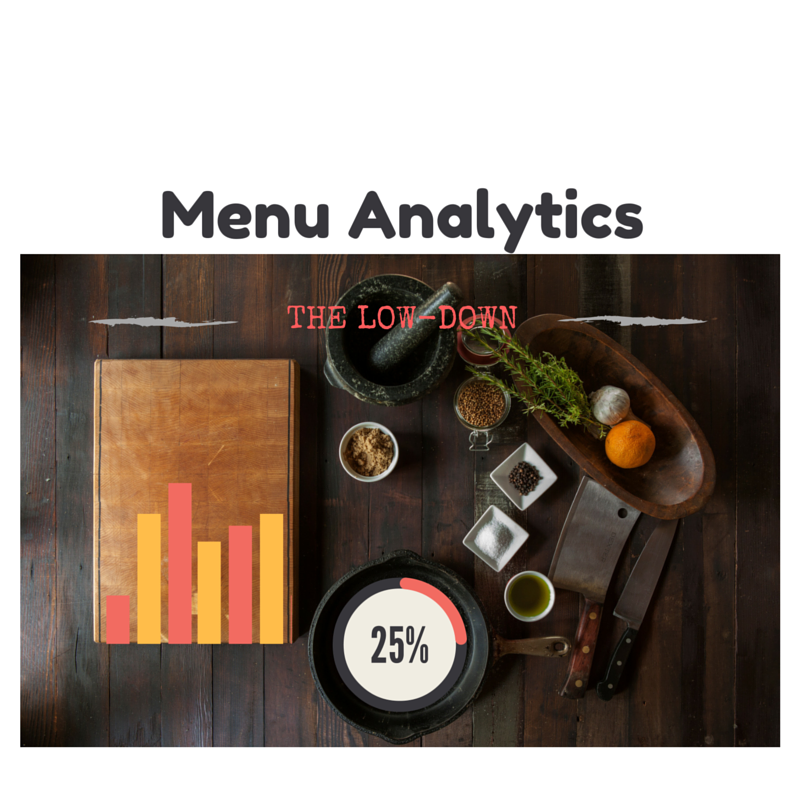Data is Most Important Item on Restaurants Menu Today
The restaurant menu is the powerful selling tool for your restaurant and acts as the foundation of your customer experience. Which is the single most important ingredient in today’s restaurant business?
Data is most important item on a restaurant menu today. Know more about how restaurants menu analytics increases revenue of restaurant industry.
Surprised? Don’t be. In the face of extreme competition, restaurants, especially quick-service restaurants (QSR) (where time is of the essence) are increasingly turning to data analytics to reduce costs, increase revenue, and pump up profits. It’s an industry where time is money, where margins are small but volumes, large.
In today’s digital world, electronic transactions have opened the sluicegates for data flow at two levels – the customer and the restaurant; both of which can be used for macro and granular analyses.
Gone are the days of Excel sheets. Restaurants are upping performance by using insights from advanced analytics in two primary areas:
Menu Analytics
You would be surprised how the use of a few adjectives, colors, or even fonts in a menu can increase sales. A recent study by Cornell University, for example, showed that the name of food items that were highlighted or were placed inside a text box drew more eyeballs and was more likely to be ordered. Using analytics to optimize a menu can drive up a restaurant’s profitability. The results start showing within six months. Too broad a menu and your service could slow down, straining your restaurant’s operations. The answer, though, is not to narrow down your menu for that could lead to a miss on sales and other add-on opportunities could be missed. Thus, data analytics is necessary for what’s called ‘Menu Engineering’ for – satisfied customers and maximum profits.
Download Free e-Book to Understand the Use Of Analytics In QSRs
Customer-level Analytics for Restaurants
Restaurants, especially those in the QSR sector, need to segment customers to understand and even predict their needs. For example, depending on the trip, one needs to classify customers accordingly – a trip for a meal for the entire family, or just one item. Visit patterns can also point to which type of customers visit at which time of the day. Using this mix, data analysts can then customize menus for different times of the day. Needless to state, all this also helps in putting customer loyalty programs in place.
Restaurants can also now analyze menus to establish the most popular (fast-moving) dishes or customize coupons for their favorite (repeat) customers. Restaurants data analytics solutions contain collecting, measuring and connecting multiple sets of data to make known perfect, actionable insights.
Industry analysts say that implementing advanced analytics in the restaurant business leads to a 3:1 return on investment.
Restaurants can use advanced analytics to improve even “off the floor” operations. QSRs, for example, want their food delivered faster. Or to improve the overall customer experience. That’s where menu analytics can help. Restaurants can use closed-circuit cameras, for example, to track the speed of services, queue lines at counters, so also at drive-throughs. Not only that but analytics also can bring down inventory (food) waste by forecasting product usage and adjusting purchases, accordingly.
The above are but a few of the benefits of using menu analytics in the food business. The functioning of almost all the departments of a restaurant can be improved vastly using this new science. Menu analytics helps identify and plug holes that are bleeding revenue, it can help improve service or drive up sales by faster delivery of food. Behind the scenes, it can help your kitchen run more efficiently.
If you are in the food business and are thinking of applying data analytics to your business, get in touch with our team for our turn-key solutions.
An Engine That Drives Customer Intelligence
Oyster is not just a customer data platform (CDP). It is the world’s first customer insights platform (CIP). Why? At its core is your customer. Oyster is a “data unifying software.”
Liked This Article?
Gain more insights, case studies, information on our product, customer data platform



No comments yet.